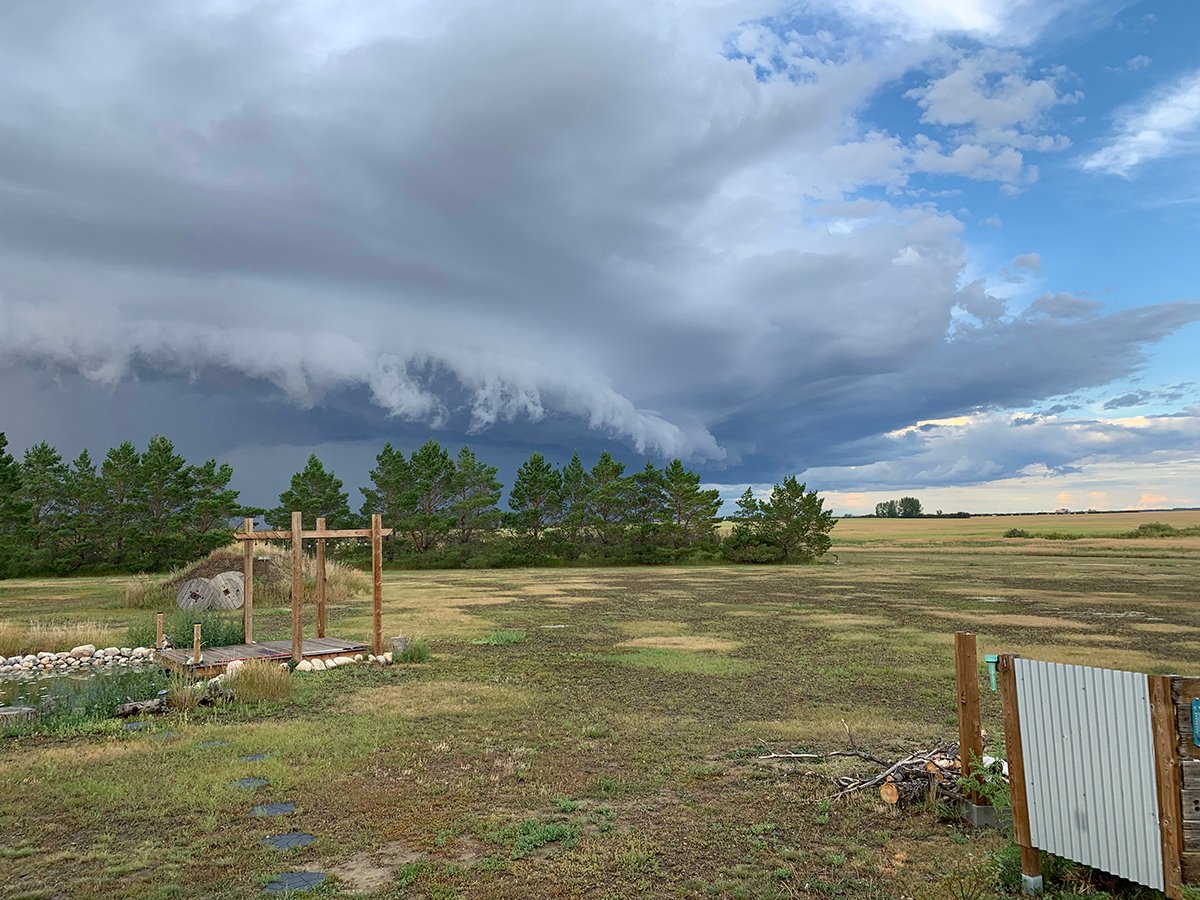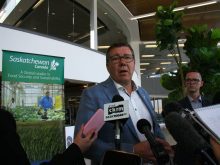PREECEVILLE, Sask. – Blue skies and warm weather have helped Saskatchewan fruit growers challenged by excess moisture and frost.
Herman Meerholz, who manages Fatikaki Farms in east-central Saskatchewan, said this year’s saskatoon crop is in good shape and should yield well when harvested later this month.
“I think I will do a good crop,” Meerholz said in an interview during the Saskatchewan Fruit Growers Association field day at his farm July 7.
“But what you think you will get off and what you get off are two different things.”
Read Also

Storm dynamics and extreme rainfall
Besides moisture, instability and orographic lift, the next biggest factor that contributes to heavy or extreme rainfall is storm dynamics.
Meerholz, whose orchard includes saskatoons, cherries and blue honeysuckle, said temperatures between 20 and 30 C would be ideal to ripen the berries evenly and maintain good flavour.
He said late springtime frosts in the area, which typically seeds later than other parts of the province, have not adversely affected the plants.
Good moisture was countering any ill effects from July heat and humidity, while generous amounts of rain caused deep ruts on trails adjacent to the new rows of honeysuckle plants.
“The ground is saturated,” he said.
For strawberry grower Marie Vermette of Prairie Dome farm near Yorkton, the moisture meant the irrigation lines were not turned on until July 1 this year.
“It’s much better for the land to get natural rain,” she said.
Muddy conditions delayed and hampered field work but recent heat has sped up the crop, and the U-pick operation was expected to begin on schedule during the week of July 9.
Rain, totalling more than 270 millimetres since May 11, was not welcomed at Charles Moore’s saskatoon and cherry orchard at Trossachs, Sask.
Moore, who is president of the fruit growers association, said he has been unable to get onto the fields. As well, disease increases in damp conditions. Dried off berries are prevalent from frost damage earlier in the growing season, he added.
“We’re only getting a third of what we normally grow,” said Moore, who had already completed the saskatoon harvest. The cherry harvest will begin in late July.
Moore said other growers in the region had similar experiences, while an orchard at Nipawin “froze out completely.”
Despite setbacks, Saskatchewan plantings of small-scale orchards are on the rise.
Moore’s concern is that because many operations are so small and lack commercial harvesters, much remains on the bushes each year.
He hopes to create a prairie-wide board to promote the industry and its potential.
Moore said more fruit research is needed to maintain breeding stock, citing the need for improved government funding. He also suggested a producer checkoff as another way to raise money for studies.
Meerholz is looking forward to strong markets for saskatoons again this year, noting demand is outstripping available supply from the three prairie provinces.
He plans to add 10 acres to his orchard each year in the coming years.
Clarence Peters, provincial fruit specialist with Saskatchewan Agriculture, said market potential is also good for sour cherries, especially organic ones, because that market is not being supplied.
The fruit’s high sugar content makes it suitable for juice, fresh and processed markets, he said.
“Ours keep their colour and do not turn brown, so that’s a good advantage.”














